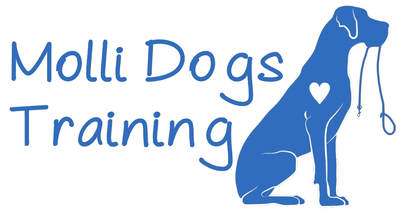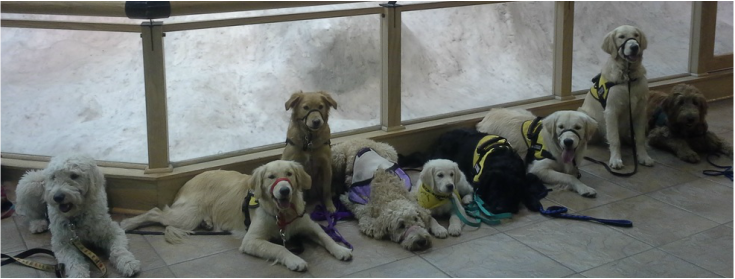What is a Service Animal?
A Service Animal, as defined by the Americans with Disabilities Act (ADA), is a dog that has been trained to do specific work or tasks for a person with a disability recognized by the ADA. The work or tasks trained must directly relate to and help alleviate the disability. These tasks, which are often life saving, aid the individual in living a more normal, independent lifestyle.
Dogs whose sole purpose is for comfort or emotional support ARE NOT Service Animals under ADA Law, although they do have some rights under the Fair Housing Act. Therapy Dogs (working dogs that enter public facilities on invitation to comfort sick and/or elderly individuals, etc.) are also not Service Animals. Individuals with these animals DO NOT have the same rights of access as individuals with Service Animals. Individuals with psychiatric disabilities may still have a Service Animal if that animal is trained to perform actual physical tasks, such as recognizing a psychiatric episode and responding to it, performing room checks for individuals with PTSD, deep pressure therapy, etc.
Dogs whose sole purpose is for comfort or emotional support ARE NOT Service Animals under ADA Law, although they do have some rights under the Fair Housing Act. Therapy Dogs (working dogs that enter public facilities on invitation to comfort sick and/or elderly individuals, etc.) are also not Service Animals. Individuals with these animals DO NOT have the same rights of access as individuals with Service Animals. Individuals with psychiatric disabilities may still have a Service Animal if that animal is trained to perform actual physical tasks, such as recognizing a psychiatric episode and responding to it, performing room checks for individuals with PTSD, deep pressure therapy, etc.
How can I tell if a Dog is a Service Animal?
A responsible handler will have their Service Animal clearly marked, usually with a vest or bandanna that states the dog is a Service Animal. Keep in mind that this is not legally required and you will run into a handful of legitimate Service Animals that are not marked. These dogs should be well behaved, quiet, and not disturb others. They should not jump up on counters, chairs, or other surfaces and should not bark or jump up on people unless they are alerting to some type of medical condition.
Businesses may ask two questions to determine whether a dog is actually a Service Animal: “Is the dog a Service Animal required for a disability?” and “What work or tasks is the dog trained to do?” It is not lawful to require identification or proof that the dog is a service animal and/or to ask any questions that might reveal information about the individual’s disability.
Businesses may ask two questions to determine whether a dog is actually a Service Animal: “Is the dog a Service Animal required for a disability?” and “What work or tasks is the dog trained to do?” It is not lawful to require identification or proof that the dog is a service animal and/or to ask any questions that might reveal information about the individual’s disability.
What should I do when I see a Service Animal
It is illegal to distract a Service Animal. Do not talk to the Service Animal or make any sounds or noises directed at the Service Animal. Do not try to touch or pet the Service Animal and do not allow your children to approach the Service animal without the handler’s permission. Do not try to feed or give commands to the Service Animal. Don’t be offended if the handler doesn’t want you to pet their dog; they are trying to go about their life just as you are and they may be busy or may be in a hurry. In addition- though it may not be obvious, social greetings may prevent some dogs from doing their work and could be potentially dangerous to the handler.


 RSS Feed
RSS Feed